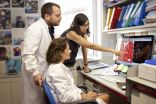(Press-News.org) BETHESDA, MD - The American Society of Human Genetics (ASHG) Workgroup on Pediatric Genetic and Genomic Testing has issued a position statement on Points to Consider: Ethical, Legal, and Psychosocial Implications of Genetic Testing in Children and Adolescents. Published today in The American Journal of Human Genetics, the statement aims to guide approaches to genetic testing for children in the research and clinical contexts. It also serves as an update to the Society's 1995 statement of the same title, which was issued jointly with the American College of Medical Genetics.
"Twenty years ago, genetic tests were first being introduced into clinical medicine, and they focused on single-gene disorders in the context of family history and population screening," said Jeffrey R. Botkin, MD, MPH, first author of the report and chair of the working group. "At that time, we had limited data on how genetic testing affected children and their families, and generally suggested that unless obtaining this data could provide timely medical benefits to the child, testing should be deferred to adulthood," he added.
Since then, the scope and accuracy of genetic testing have improved, and health professionals have gained experience explaining, recommending, and administering such tests. To reflect these changes, the new statement addresses a variety of issues related to genetic testing, including:
Scientific advances such as whole-genome sequencing (WGS), chromosomal microarray analysis (CMA), and pharmacogenomics
Predictive testing in children for adult-onset conditions
Ethical consideration of how to handle so-called "secondary findings" - findings unrelated to the condition that prompted the genetic test
Whether state programs should implement parental permission for newborn screening
Implementation challenges such as modifying health records to include genetic data and training health professionals on the uses and limitations of new technologies
Distinctions between genetic tests that provide information about the health of the person being tested and those that identify the person as a potential carrier of disease
Ways in which children of different ages understand and act upon genetic findings
Questions related to adoption, consanguinity, and paternity
The advent of WGS raises questions about how extensively it should be used. At this time, the statement authors did not recommend routinely sequencing the genomes of healthy children, including newborns. In contrast, they said, for a child likely to have a genetic disease, WGS would be an appropriate diagnostic tool, but the scope of testing should be restricted to a single gene or limited set of genes when possible.
The statement authors also outlined areas in which additional research is needed. An important challenge is the gap between scientists' ability to identify genetic variants and their ability to interpret what they mean. For this reason, the authors recommend that geneticists develop a list of genes for which the chromosomal variations detected by CMA are clearly related to disease. Along similar lines, they called for further evaluation of pharmacogenetic testing to assess its usefulness and limitations in predicting how children respond to drugs.
In addition, the authors stated, adequate data on the psychosocial impact of pediatric genetic testing (including carrier testing) on children and their families is lacking. Clear communication of results is key, they noted, and recommended additional research into the best ways to educate children and parents before the test and to explain results after the test.
"Genetic testing provides powerful information about an individual's future and that of their family, which enables informed decision making about healthcare, lifestyle, and reproduction - particularly impactful for children and adolescents who are early in their lives. At the same time, this information is largely probabilistic, making it difficult to communicate clearly to patients and their parents, and it may trigger stigma or discrimination," said Joseph D. McInerney, MS, Executive Vice President of ASHG.
"For these reasons," Mr. McInerney added, "it is especially important to carefully consider the implications of genetic testing in children and adolescents and choose the best way to implement these new technologies."
INFORMATION:
Idiopathic pulmonary fibrosis (IPF) causes a gradual loss of respiratory capacity and can be lethal within a few years. The cause is unknown, although it can be attributed to a combination of genetics and the environment. A team of researchers from the Spanish National Cancer Research Centre (CNIO) have now discovered that telomeres, the structures that protect the chromosomes, are at the origin of pulmonary fibrosis. This is the first time that telomere damage has been identified as a cause of the disease. This finding opens up new avenues for the development of therapies ...
A mutation found in most melanomas rewires cancer cells' metabolism, making them dependent on a ketogenesis enzyme, researchers at Winship Cancer Institute of Emory University have discovered.
The finding points to possible strategies for countering resistance to existing drugs that target the B-raf V600E mutation, or potential alternatives to those drugs. It may also explain why the V600E mutation in particular is so common in melanomas.
The results are scheduled for publication in Molecular Cell.
The growth-promoting V600E mutation in the gene B-raf is present in ...
The first comprehensive analysis of the woolly mammoth genome reveals extensive genetic changes that allowed mammoths to adapt to life in the arctic. Mammoth genes that differed from their counterparts in elephants played roles in skin and hair development, fat metabolism, insulin signaling and numerous other traits. Genes linked to physical traits such as skull shape, small ears and short tails were also identified. As a test of function, a mammoth gene involved in temperature sensation was resurrected in the laboratory and its protein product characterized.
The study, ...
MAYWOOD, Ill. - New devices called stent retrievers are enabling physicians to benefit selected patients who suffer strokes caused by blood clots. The devices effectively stop strokes in their tracks.
For the first time, new guidelines from the American Heart Association/American Stroke Association recommend the treatment for carefully selected patients who are undergoing acute ischemic strokes and who meet certain other conditions.
Loyola University Medical Center stroke specialist Jose Biller, MD, is a member of the expert panel that wrote the guidelines, published ...
Infrared date from NASA's Aqua satellite spotted the strongest storms within newborn Tropical Depression 10W over the Philippine Sea today, July 2. It is expected to strength to a tropical storm, at which time it will be renamed "Linfa."
A tropical cyclone is made up of hundreds of thunderstorms, and the highest storms are the coldest and most powerful. To identify those areas with the strongest storms, infrared data is used because it tells temperature. The higher the cloud top, the stronger the uplift in a storm and the colder the cloud top temperature will be.
The ...
By growing two types of stem cells in a "3-D culture" and measuring their ability to produce retinal cells, a team lead by St. Jude Children's Research Hospital researchers has found one cell type to be better at producing retinal cells.
The research not only reveals which stem cell type might be better for treating retinal degeneration, but it also demonstrates a standardized method for quantifying the effectiveness of different stem cells for such therapies.
The research was led by Michael Dyer, Ph.D., a member of the St. Jude Department of Developmental Neurobiology ...
Astronauts on the International Space Station (ISS) have a number of exercise options, including a mechanical bicycle bolted to the floor, a weightlifting machine strapped to the wall, and a strap-down treadmill. They spend a significant portion of each day working out to ward off the long-term effects of weightlessness, but many still suffer bone loss, muscle atrophy, and issues with balance and their cardiovascular systems.
To counteract such debilitating effects, research groups around the world are investigating artificial gravity -- the notion that astronauts, ...
The latest Supplement to the American Ornithologists' Union Check-list of North American Birds was published this week in The Auk: Ornithological Advances, and includes several major updates to the organization of the continent's bird species. More than just a list, the Check-list groups birds into genera, families, and orders based on their evolutionary relationships, and some of the most significant changes in this year's Supplement involve the tanagers, family Thraupidae. "Recent genetic studies have overturned much of what we thought we knew about what constitutes a ...
July 2, 2015 - While heart disease is the number one cause of death in both sexes, it poses special considerations in women--with risks often beginning in childhood and changing at different stages of life. Insights on cardiovascular disease (CVD) risk in women and girls throughout the life span are shared in a special symposium feature in the June issue of The American Journal of Medical Sciences (AJMS). The official journal of the Southern Society for Clinical Investigation (SSCI), AJMS is published by Wolters Kluwer.
Two symposium papers seek to increase understanding ...
ATLANTA - July 2, 2015-Cancer survivors who smoke report fewer negative opinions about smoking, have more barriers to quitting, and are around other smokers more often than survivors who had quit before or after their diagnosis, according to a new study appearing in Psycho-Oncology. The authors say these factors point to potential targets to help cancer survivors quit.
Quitting smoking is important for cancer prognosis, but some cancer survivors continue to smoke. Although initial quit rates are high among those diagnosed with cancers strongly linked with smoking (e.g., ...


